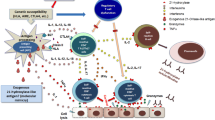Abstract
Hidradenitis suppurativa (HS) is a chronic disabling inflammatory disease of the follicular unit especially affecting apocrine gland-bearing skin areas. Little is known about systemic inflammatory complications of the disease. This study aimed to evaluate systemic inflammation in patients with HS by assessing serum amyloid A protein (SAA) and C-reactive protein (CRP) levels and erythrocyte sedimentation rate (ESR) and to identify potential risk factors for HS. Forty-four patients (M/F: 28/16) and 44 age- and sex-matched controls (M/F: 28/16) were enrolled. Demographic, clinical, laboratory, and therapeutic data, including smoking status, body mass index (BMI), waist circumference (WC), serum fasting lipid profile, fasting blood glucose, SAA, and CRP levels, and ESR were assessed. Associations were investigated by univariate and multivariate analyses. Patients with HS showed significantly higher levels of pack-years of cigarette smoking, weight, BMI, and WC (P = 0.01, P < 0.001, P = 0.001) and elevated SAA and CRP levels and ESR (P = 0.008, P = 0.01 and P < 0.001). SAA and CRP levels and ESR were significantly associated with Hurley staging in patients with HS (P = 0.03, P = 0.003, P = 0.02). Multivariate logistic regression analysis revealed that each unit increase in the ESR increased the HS risk by 1.08-fold (95% CI 1.02–1.13). HS is significantly associated with SAA, CRP, and ESR. Among these inflammatory parameters, ESR was an independent risk factor for HS. We recommend assessment of SAA, CRP, and ESR as biomarkers that reflect the disease severity in HS patients likely to develop complications.
Similar content being viewed by others
Abbreviations
- HS:
-
Hidradenitis suppurativa
- CRP:
-
C-reactive protein
- ESR:
-
Erythrocyte sedimentation rate
- BMI:
-
Body mass index
- WC:
-
Waist circumference
- AA:
-
Amyloid A
- SBP:
-
Systolic blood pressure
- DBP:
-
Diastolic blood pressure
- SLP:
-
Serum lipid profile
- TC:
-
Total cholesterol
- HDL-C:
-
High-density lipoprotein cholesterol
- LDL-C:
-
Low-density lipoprotein cholesterol
- VLDL-C:
-
Very low-density lipoprotein cholesterol
- TG:
-
Triglycerides
- FBG:
-
Fasting blood glucose
- FMF:
-
Familial Mediterranean fever
References
Zouboulis CC, Del Marmol V, Mrowietz U, Prens EP, Tzellos T, Jemec GB (2015) Hidradenitis suppurativa/acne inversa: criteria for diagnosis, severity assessment, classification and disease evaluation. Dermatology 231(2):184–190
Titze J, Schneider M, Krause H, Jacobi J, Stolte M, Linke RP, Rupprecht HD (2003) Diarrhea, nephrotic syndrome and hidradenitis suppurativa: an unusual case. Nephrol Dial Transplant 18(1):192–194
Utrera-Busquets M, Romero-Mate A, Castano A, Alegre L, García-Donoso C, Borbujo J (2016) Severe hidradenitis suppurativa complicated by renal AA amyloidosis. Clin Exp Dermatol 41(3):287–289
Schandorff KD, Miller IM, Krustrup D, Jemec GB, Marckmann P (2016) Renal amyloid A amyloidosis as a complication of hidradenitis suppurativa. Clin Nephrol 86(1):51–54
Ozer I, Karacin C, Adisen E, Guz G, Ali Gürer M (2017) Two diseases one remedy? Systemic amyloidosis secondary to hidradenitis suppurativa: treatment with infliximab. Dermatol Ther 30(2):e12445
Girouard SD, Falk RH, Rennke HG, Merola JF (2012) Hidradenitis suppurativa resulting in systemic amyloid A amyloidosis: a case report and review of the literature. Dermatol Online J 18(1):2
World Health Organization (2008) Waist circumference and waist-hip ratio: report of a WHO expert consultation. http://www.who.int/iris/handle/10665/44583. Accessed Dec 2008
Kochi S, Esaki M, Kurahara K (2018) Secondary gastrointestinal amyloid A amyloidosis possibly caused by hidradenitis suppurativa. Dig Endosc 30(5):681
Yu N, Zhang S, Lu J, Li Y, Yi X, Tang L, Su L, Ding Y (2017) Serum amyloid A, an acute phase protein, stimulates proliferative and proinflammatory responses of keratinocytes. Cell Prolif 50(3):1–10
Eklund KK, Niemi K, Kovanen PT (2012) Immune functions of serum amyloid A. Crit Rev Immunol 32(4):335–348
Lachmann HJ, Goodman HJ, Gilbertson JA, Gallimore JR, Sabin CA, Gillmore JD, Hawkins PN (2007) Natural history and outcome in systemic AA amyloidosis. N Engl J Med 356(23):2361–2371
Zemer D, Pras M, Sohar E, Modan M, Cabili S, Gafni J (1986) Colchicine in the prevention and treatment of the amyloidosis of familial Mediterranean fever. N Engl J Med 314(16):1001–1005
Pascual JC, Gonzalez I, Corona D, Hispan P, Ramos JM, Sánchez-Paya J, Jemec GB (2017) Assessment of subclinical atherosclerosis in hidradenitis suppurativa. J Eur Acad Dermatol Venereol 31(7):1229–1238
Akdogan N, Alli N, Uysal PI, Topcuoglu C, Candar T, Turhan T (2018) Visfatin and insulin levels and cigarette smoking are independent risk factors for hidradenitis suppurativa: a case-control study. Arch Dermatol Res 310(10):785–793
Jimenez-Gallo D, de la Varga-Martinez R, Ossorio-Garcia L, Albarran-Planelles C, Rodríguez C, Linares-Barrios M (2017) The clinical significance of increased serum proinflammatory cytokines, C-reactive protein, and erythrocyte sedimentation rate in patients with hidradenitis suppurativa. Mediat Inflamm 2017:2450401
Prens E, Deckers I (2015) Pathophysiology of hidradenitis suppurativa: an update. J Am Acad Dermatol 73(5 Suppl 1):S8–S11
Hessam S, Sand M, Gambichler T, Bechara FG (2015) Correlation of inflammatory serum markers with disease severity in patients with hidradenitis suppurativa (HS). J Am Acad Dermatol 73(6):998–1005
Acknowledgements
We kindly thank Hacettepe University editing service for meticulous editing of the manuscript.
Funding
This work was supported by Turkish Dermatology Society on January 24, 2019 (Grant number 2019-10).
Author information
Authors and Affiliations
Corresponding author
Ethics declarations
Conflict of interest
The authors have no conflict of interest to declare.
Ethical approval
The study protocol was approved by the Medical Ethics Committee of Ankara Numune Training and Research Hospital (code E-18-2316, December 15, 2018). All study procedures were done in accordance with the ethical principles of the 1964 Declaration of Helsinki, and all the participants provided written informed consent.
Additional information
Publisher's Note
Springer Nature remains neutral with regard to jurisdictional claims in published maps and institutional affiliations.
Rights and permissions
About this article
Cite this article
Akdogan, N., Dogan, S., Incel-Uysal, P. et al. Serum amyloid A and C-reactive protein levels and erythrocyte sedimentation rate are important indicators in hidradenitis suppurativa. Arch Dermatol Res 312, 255–262 (2020). https://doi.org/10.1007/s00403-019-02014-8
Received:
Accepted:
Published:
Issue Date:
DOI: https://doi.org/10.1007/s00403-019-02014-8




